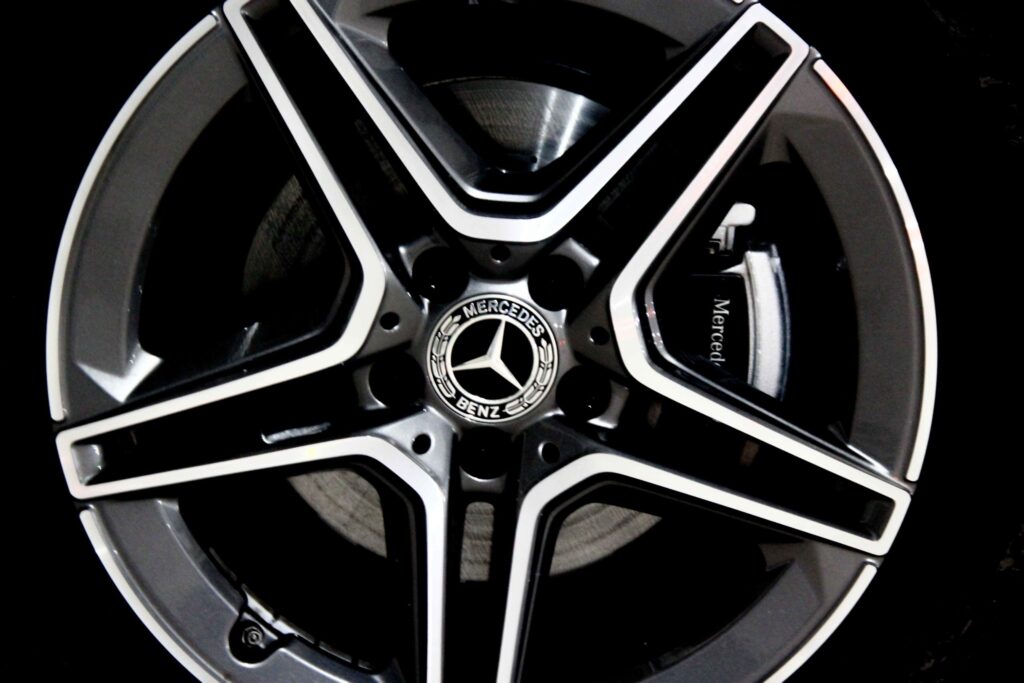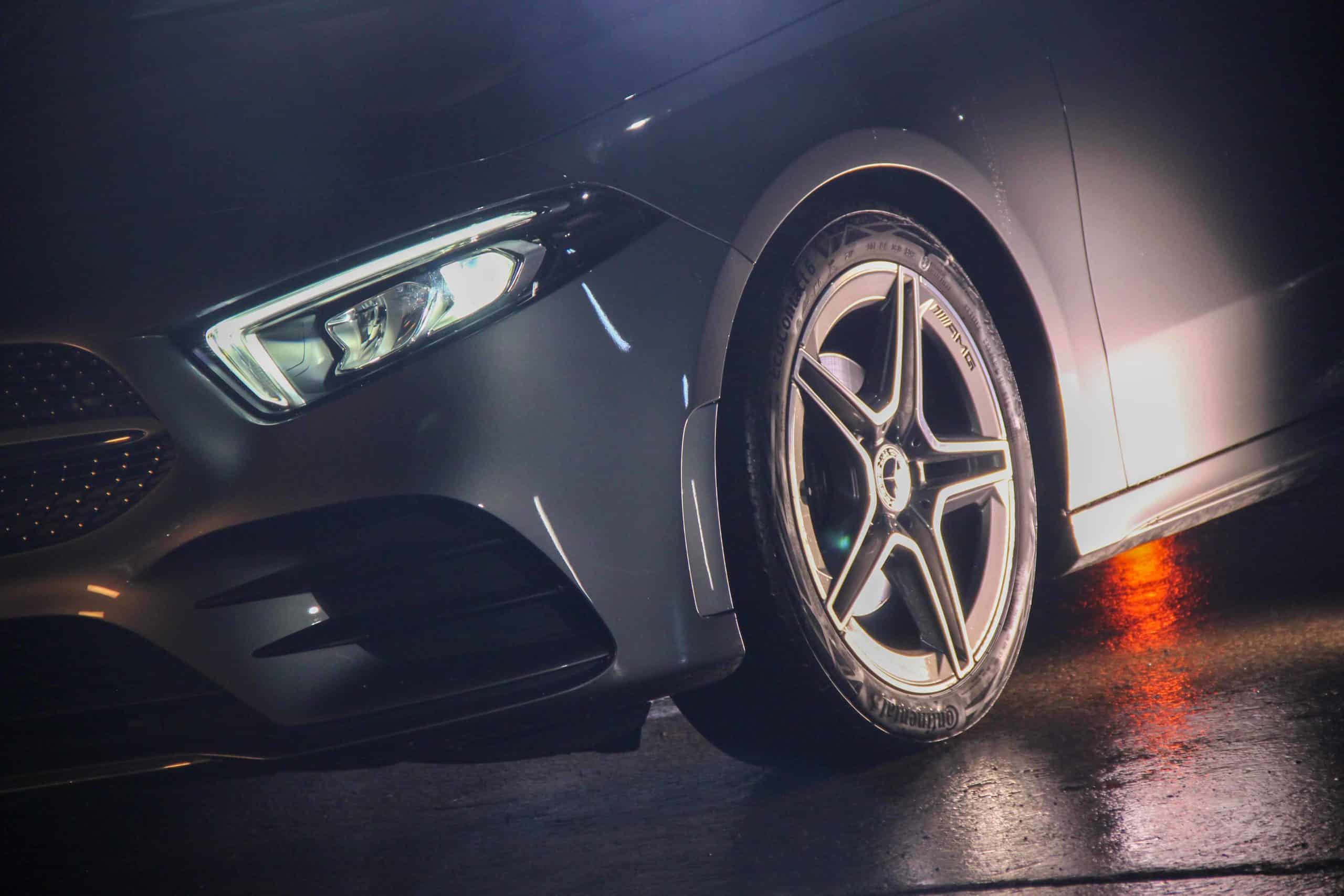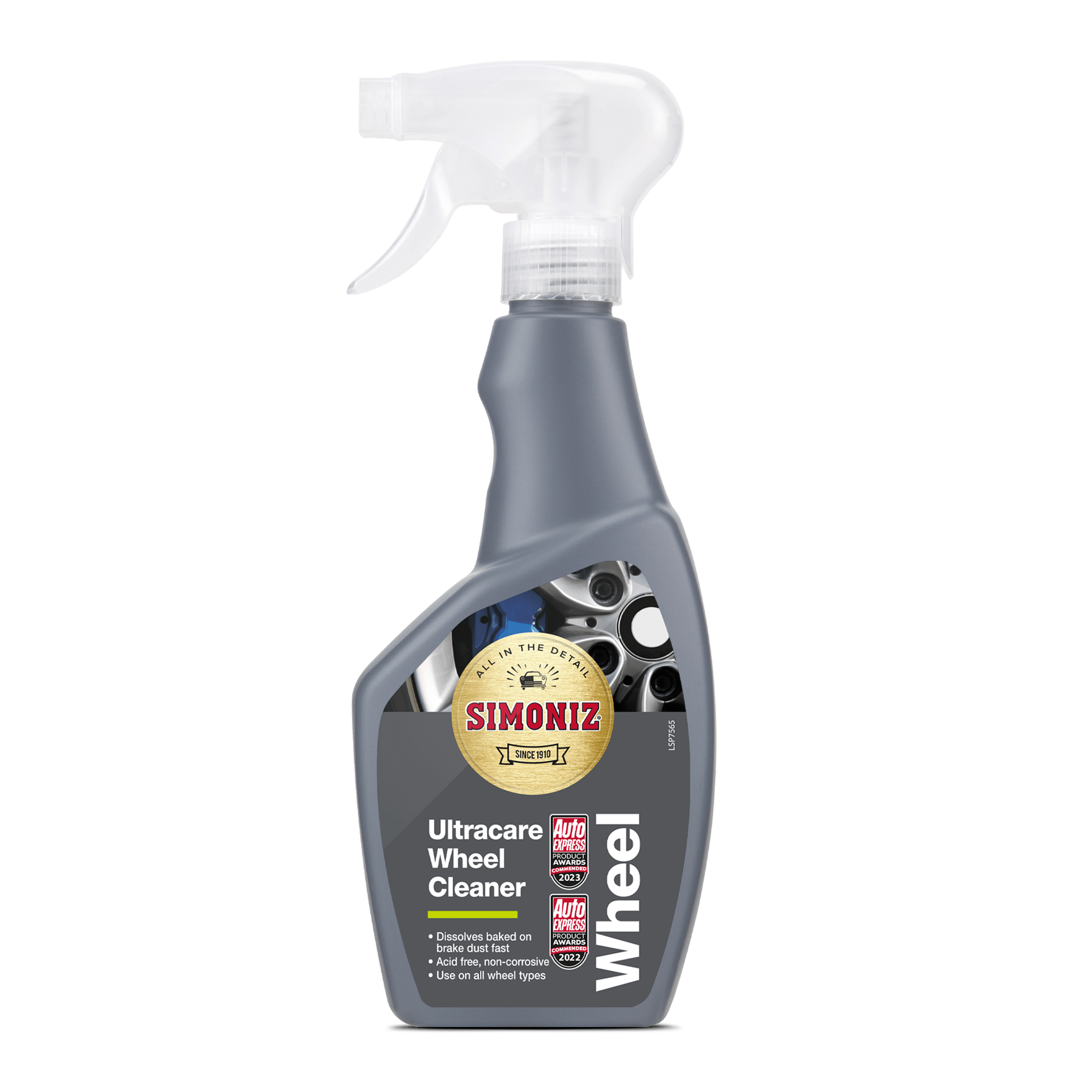Regardless of how carefully you drive, it’s almost impossible to prevent alloy wheels from picking up dirt and grime. From brake dust to mud and rain, alloys are exposed to the elements, so it’s important to regularly clean and protect them to make sure they’re always cared for and shining like new.
To keep those shiny alloys looking their best for longer, here are our essential wheel and tyre care tips.
Quick Links
- First Steps: Where to Start and Removing the Wheels
- How to Remove Brake Dust from Alloy Wheels
- Step-by-Step Alloy Wheel Cleaning
- Cleaning and Caring for Tyres
First Steps: Where to Start and Removing the Wheels
Before You Start
In an ideal world, we’d clean our alloys after every trip, but this isn’t realistic for most car owners. Compromise with a fortnightly rinse; it’ll help keep your alloys in good condition.
If you’re washing the entire exterior of the car, you should clean your alloys first. This is because you’ll want to minimise brake dust splashing onto your recently polished paintwork – trust us, it’s much easier to do the wheels first!
You should also avoid cleaning your alloys when they are still warm from driving – allow them to cool first, then clean.

Removing the Wheels
It’s not necessary, but if you want to give your alloys a really deep clean then you could remove them from the car, as you’ll have better access to those hard-to-reach areas. Follow the steps below to safely remove them:
- Park on a level surface and ensure the handbrake is turned on
- Using a wheel brace, loosen the nuts by a couple of turns
- Jack up the car using the jack supplied with the car or a trolley jack (consult the owner’s manual if you’re unsure of your car’s jacking points)
- Place an axle stand beneath the suitable jacking point and carefully lower the car onto the stand
- Remove the loosened wheel nuts and the wheel
After removing the wheel, it’s important to make sure that the alloy doesn’t touch the ground, as this could scratch or damage the surface. Suspend the wheel on two lengths of wood, placed under the rubber of the tyre.
Make sure the wheel is fully cleaned and securely returned to the car before starting work on the next wheel.
How to Remove Brake Dust from Alloy Wheels
Wheels are probably the hardest part of your car to maintain to a high standard, and it’s largely due to contamination from deposits like brake dust. Brake dust is a major problem for cars with alloy wheels; it’s corrosive, unsightly, and can be extremely difficult to remove.
Brake dust forms when the brake pad is worn away during braking. Each time you brake, particles from the pad fly off and stick to the rim, resulting in a layer of residue that gets worse over time. Brake dust is composed of metal filings, adhesive residues and carbon fibres, and because it’s deposited on the rim at a high-temperature, it etches into the wheel’s protective coating — causing staining and, if left to sit for too long, corrosion.
A pressure washer is your friend when removing brake dust. Give each alloy a blast, making sure to get in all the corners, to remove as much brake dust and deposits as possible. You can also use a soft-bristled wheel brush for removing brake dust; just remember to always use a brush with plenty of water, as a dry brush could scratch the surface of the alloy.
Step-by-Step Alloy Wheel Cleaning
The easiest way to keep your alloys looking good is to get into a regular wheel cleaning routine. To keep your car’s rims free from brake dust and dirt, you’ll need to clean them every 1-2 weeks depending on how often you drive. Here’s a step-by-step guide to keeping your wheels free from brake dust and other residue:
Step 1: Remove loose surface contaminants
With a hose or pressure washer, blast away any loose debris and dust from the rim, taking care not to knock any of the wheel’s balancing weights while you’re at it.
Step 2: Scrub the rim using a wash mitt or sponge
If the brake dust isn’t too bad, scrubbing the rim with a wash mitt should remove most of the residue. You can use a normal car shampoo to help to remove the looser dirt.
Step 3: Spray on a dedicated wheel cleaner
Simoniz Ultracare Alloy Cleaner is non-corrosive, so won’t damage your alloys even if they’re scuffed or scratched. Spray it over the alloys, particularly on brake dust build-up, and leave it to soak.
Step 4: Scrub the rim using a soft-tipped wheel cleaning brush
If the brake dust is stubborn, get yourself a soft-bristled wheel cleaning brush to give the rim a more intense scrub. Alloy wheel brushes are great for removing the most dried-on and imbedded of wheel deposits, and their shape means you can clean hard-to-reach areas.
Step 5: Rinse and dry the wheel
Rinse the rim with a hose or pressure washer to remove any leftover residue or particles. Then, dry the rim thoroughly with a microfibre cloth or towel.
Step 6: Apply a high-quality wheel sealant
Wheel specific sealants offer better protection against high-temperature brake dusk than conventional waxes and sealants, helping to prevent the dust etching permanent marks on the alloys. Like normal car wax, wheel sealant should be applied liberally and left to dry. First, ensure your wheels are clean and dry. Use it like paint, applying in short even bursts to get even coverage. Leave to dry for a few minutes and enjoy cleaner wheels for weeks.
Tip: If you don’t have a specific protector or sealant, applying wax or polish to the alloy wheel will also protect them, help to keep them clean and improve the appearance of the alloys.
Cleaning and Caring for Tyres
What good are shiny alloys if your tyres look faded, too? When exposed to excess road dirt, water and heat, tyres become faded and lose their glossy, just-bought appeal — adding age to even the newest of cars. But all is not lost, as it’s easy to restore the rich black appearance of your car’s rubber.
Start by blasting the tyres clean with a pressure washer or hose, before drying the sidewall with kitchen roll or a towel. Then, simply apply a tyre-dressing product like Simoniz Back to Black Tyre & Trim, and the rubber will be restored to its rich, black best. We’d recommend you apply the tyre shine after the wheel is completely clean and dry, and spray it on in even, sweeping layers.
At Simoniz, our time-tested cleaning products can help keep your car looking it’s just-washed best for longer. To find out more about our range of trusted car care products, visit the Simoniz website.


